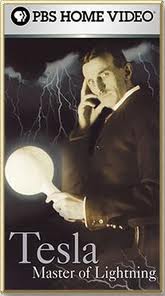How Nikola Tesla Wanted to Provide Free Energy to the Whole World
https://www.youtube.com/watch?v=7r-3FNtgOFM
It’s almost a cliché. Working alone, an inventive genius pioneers new devices that ultimately change the world but his genius is barely recognised and he goes on to die in relative poverty; and whilst he dies, virtually alone and unrecognised, his inventions eventually transform life across the planet.
Unfortunately it’s pretty much the story of Nikola Tesla, the scientific visionary whose inventions shaped much of the 20th century, whilst the man himself has been all but forgotten. And it is no exaggeration to call Tesla a visionary.
In contrast to many scientific pioneers who spent years developing their projects, Tesla’s ideas were often conceived and perfected in his mind’s eye in an instant.
“Birth, growth and development are phases normal and natural,” said Tesla, but, “It was different with my invention(s). In the very moment I became conscious of it, I ‘saw’ it fully developed and perfected…”
In fact these extraordinary powers of memory and visualisation were to characterise much of his life and work. One day while walking with a friend in Budapest, Tesla was reciting lines from Goethe’s Faustwhen the idea of a rotating magnetic field suddenly appeared before him, literally. In an instant Tesla knew how to produce the alternating current.
“Can’t you see it right here in front of me, running almost silently?” He asked his companion: “It is the rotating magnetic field that does it… Isn’t it beautiful? Isn’t it simple? My motor will set man free, it will do the work for the world.”
He was in every sense of the word a scientific visionary; he initially developed the fluorescent bulb and neon lights; he pioneered the speedometer and the car ignition system, and helped reveal the basic scientific principles behind electron microscopes, and the microwave oven. Yet apart from a small but enthusiastic following that has grown around him, most people have hardly even heard of Nikola Tesla.
Born at the stroke of midnight, July 9-10, 1856 in Similjan, Croatia, the son of a priest of the local Serbian Orthodox Church, the young Tesla quickly distinguished himself as intelligent and went on to study physics and mathematics in Gospic and electrical engineering at the Polytechnic Institute in Graz, Austria.
A turning point came in 1884 when Tesla first arrived in America but initially he wasn’t too impressed: “What I had left was beautiful, artistic and fascinating in every way.” He wrote to a friend: “What I saw here was machined, rough and unattractive.”
The young immigrant arrived with four cents in his pocket, some mathematical computations and a letter of introduction from Charles Batchelor, one of Thomas Edison’s business associates in Europe.
After a short spell working for Thomas Edison, Tesla went out on his own and by December 1887 he had filed for seven US patents. These comprised a complete system of generators, transformers, transmission lines, motors and lighting. So original were the patents that they were issued without a challenge, as would normally happen. They turned out to be the most valuable patents since the telephone.
Pittsburgh industrialist George Westinghouse heard about Tesla’s inventions and decided to investigate for himself. Acting on his sharp business instincts, Westinghouse arrived at Tesla’s lab, inspected the inventions and promptly bought the patents, which ironically were to lay the foundations for the Westinghouse Corporation, one of the pillars of the Military/Industrial complex (otherwise known as the ‘New World Order’).
The Westinghouse Corporation went on to win the bid for illuminating the World’s Fair. Held in Chicago in 1893, the fair was also the world’s first ever all-electric fair. It opened on the evening of May 1 when President Grover Cleveland pushed a button and a hundred thousand incandescent lamps illuminated the fairground’s neoclassical buildings.
Tesla inventions had arrived and they were about to illuminate not only the World Fair but also the world itself.
Unlike Westinghouse though, Tesla didn’t have any business sense, nor was he driven by any overwhelming desire to make money; instead he had vision, genius, a God given creative gift that has led some observers to liken him to a Da Vinci of the modern day sciences.
In fact it’s no exaggeration to say that Westinghouse Corporation was built on Tesla’s lack of business sense. Years of fierce competition with Edison’s Corporation had left Westinghouse financially drained and by 1896 his company’s position was looking extremely precarious.
J.P. Morgan, the Stock Market’s ‘robber baron’, saw his chance. In an effort to bring the US power industry firmly under his control he began to manipulate the Stock Market, with the intention of ruining Westinghouse and buying Tesla’s valuable patents.
In desperation, Westinghouse pleaded with Tesla to revise his contract and release him from a bond to pay the inventor generous royalties. In a gesture that was typical of his true spirit, Tesla is said to have torn up the contract.
https://www.youtube.com/watch?v=Mb5LMWpL3io
Rocky Mountain High
Around the turn of the century Tesla concluded that it would be possible to transmit electrical power without wires. To optimise results, he chose to experiment at high altitude, where the air was thinner and therefore more conductive.
As a result he ended up building a research laboratory in Colorado Springs where he conducted some of his most extraordinary experiments, tests that even to this day are shrouded in mystery.
Tesla theorised that unlimited amounts of power could be transmitted anywhere on Earth, without wires and with virtually no loss of energy. It is not clear exactly how he intended to do this, but right up until the end of his life he maintained it was quite possible and that he only needed sufficient funds to make it a reality.
The funds, however, were not forthcoming, and Tesla was eventually forced to abandon his Colorado experiments in what was to become a recurrent feature in his life: no money or insufficient finance to pursue an idea… but a constant stream of new ideas.
At the beginning of the First World War, Tesla described a means for detecting ships at sea. His idea was to transmit high-frequency radio waves that would reflect off the hulls of vessels and appear on a fluorescent screen. The idea was way ahead of its day, and at the time few quite understood it, but it was a forerunner of what we now call radar.
Tesla was also the first to see a time when flying vehicles could be remotely controlled to land with an explosive charge on an unsuspecting enemy. In effect he was describing what we know today as a cruise missile.
By 1922 Tesla was working as a consulting engineer. He was making just enough money to live on, but often the plans he drew up were rejected as impractical.
Interestingly, around this time Tesla spoke out against the new theories of Albert Einstein. In contrast to the Nobel Laureate, Tesla maintained that energy was not contained in matter, but in the space between the particles of an atom.
Toward the end of his life Tesla became even more eccentric and reclusive. He began visiting parks to rescue pigeons that he then took home to nurse.
In his final years, at the Hotel New Yorker, he had the chef prepare a special mix of seeds for the birds. He also became obsessive about cleanliness, eating only boiled foods.
Nonetheless the ideas continued to flow and in the years prior to the Second World War he announced that he had discovered a new energy source, and a technology that could end war entirely.
The New York Times of 11 July 1934 announced that: “TESLA, AT 78, BARES NEW DEATH BEAM.”
“The Death Beam,” the Times continued, “will send concentrated beams of particles through the free air, of such tremendous energy that they will bring down a fleet of 10,000 enemy warplanes at a distance of 250 miles…”
The weapon, said Tesla, would make war impossible by surrounding every country with an “invisible Chinese Wall.” It was, in effect, what we know today as a charged particle beam accelerator.
Once again though, Tesla was unable to summon sufficient finance to back his proposal and as the prospect of war became more likely so Tesla became ever more desperate.
In despair he finally sent detailed plans for his ‘peace weapon’ to the governments of the US, Britain, France, Canada, Yugoslavia and the Soviet Union. But to Tesla’s dismay, none of the Western governments took his proposal seriously, not at the time anyway.
However, in the aftermath of Tesla’s death in 1943, it became apparent that some of these governments had grown more than a little interested.
Tesla’s nephew, Sava Kosanovic went to his uncle’s rooms on the morning of his death. On arrival, according to Kosanovic, the rooms looked as if they had been searched; notebooks and crucial technical papers were missing, and two days later the Office of Alien Property seized all of Tesla’s remaining belongings.
One result of this is H.A.A.R.P.1 Situated in Alaska, exactly where Tesla first proposed it should be sited, H.A.A.R.P. is seen by some observers as a working example of a device first proposed by Tesla in 1915. Long before anyone had heard of H.A.A.R.P., before it had even been built, Tesla was talking to the press about it.
“It is perfectly practicable to transmit electrical energy without wires and produce destructive effects at a distance,” he told the New York Times in an interview published on December 8, 1915.
“I have already constructed a wireless transmitter which makes this possible, and have described it in my technical publications. . . With a transmitter of this kind we are enabled to project electrical energy in any amount to any distance [HAARP’s output is a full gigawatt] and apply it for innumerable purposes, both in war and peace.”
https://www.youtube.com/watch?v=WBcnMpYDiFU






2 Comments on “NIKOLA TESLA: MAVERICK, VISIONARY & MASTER OF LIGHT.”
Comments are closed.